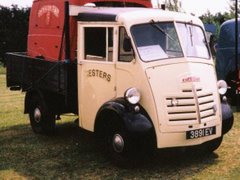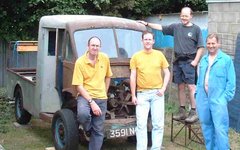Regular readers will know of my problems with my Sealey welder and of my trouble getting it repaired (all problems around the distributor wrongly advising me about Sealey's repair policy), which left me feeling misled and out of pocket.
The frustration was compounded when the welder developed faults which hadn't been there before I sent it away - the welding tip arc-ed when brought into contact with earthed metal, even though I hadn't pulled the trigger, which scared the heck out of me because I wasn't wearing my eye-shield or gloves. I wiggled the trigger but it wouldn't swtitch off. This was odd because the liner had been changed by Sealeys, so there couldn't be anything wrong with the trigger. When I welded, the tip over-heated and the gas shield melted...and then the feed stopped feeding - which was the original problem. I began to fear that it would be cheaper to scrap the machine and lay out a load of dosh for a new one. But Sealey saved the day.
They put Colin Chiddington, their head of the technical department, on to the case, he arranged for the welder to be collected, promised to keep me posted on progress and saw to it that the machine was fully examined and put right.
It turned out that the problem was related to the PCB - a relay problem that hadn't been spotted before. Anyway, the relay was changed, the liner was replaced again as a precaution, the gas shield was changed...and the machine returned quickly....and here is the great bit, Colin said that there would be no charge, that he and all the people at Sealey were pleased to be able to do the work as a gesture of good will.
I'd like to say here that I am particularly grateful that Colin in particular was put on the case because he made sure I knew what was going on every step of the way, giving me feedback on the points I had raised and explaining what they thought had gone wrong. Once repaired they confirmed that the machine is now working to spec, which could mean it is even better than when I sent it away! They sent me some test welds, and I do have to say, they looked excellent; wish I got results that good.
Cheers Colin. Thank you Sealey Ltd. I have spent the last two nights welding with no problems.
**********************************************************
Endnote: Given the level of satisfaction a customer like me can feel with a company tracking down a fault and fixing it, and all the time keeping me posted about what it involved and what it'll cost to fix it, why does Sealey have a policy of just replacing parts to a certain % of the value of the welder? I'd have thought they might want to reconsider that. Repairs and servicing are different things and it doesn't seem cost effective to risk having to do the job all over again.



















